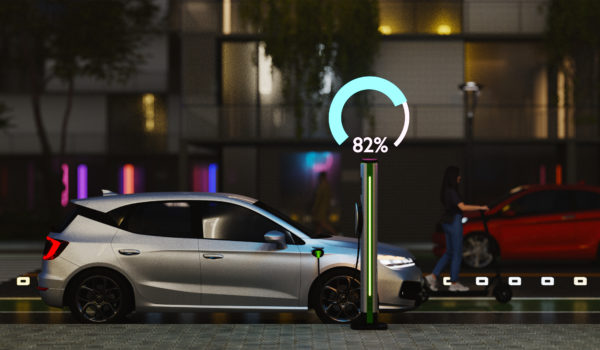The relationship between available transportation and the success of multifamily developments is nothing new for developers and property owners. It has historically been tied to convenient proximity to public transportation and infrastructure so tenants can access desirable business and retail centers, and many housing finance agencies have considered the availability of public transportation when awarding low-income housing tax credits to multifamily developers. The expanding electric vehicle (EV) market and the legislative incentives and mandates for ubiquitous EV use is yet another factor multifamily property owners and operators will need to consider, including the ability of tenants to charge their EV at home. For example, the U.S. Environmental Protection Agency issued a final rule on April 18, 2024 (titled “Multi-Pollutant Emissions Standards for Model Years 2027 and Later Light-Duty and Medium-Duty Vehicles”) that imposes more stringent emissions standards on new vehicles and is expected to lead manufacturers to produce more EVs and less gas-powered vehicles.
Continue reading the article below or watch this short video for key points and takeaways.
California has gone a step further and passed the Advanced Clean Cars II regulation in 2022 which requires all new passenger cars, trucks, and SUVs sold in California to be zero-emission vehicles by 2035. Moreover, one of the major obstacles to EV proliferation that analysts often point to—the lack of EV charging stations along major interstate corridors—is being addressed through the National Electric Vehicle Infrastructure Program, which administers grants from the U.S. Federal Highway Administration to state highway transportation departments in order to build EV charging stations in strategically located areas.
The push toward EVs having a greater market share requires multifamily property owners to learn about and account for certain realities involved in EV ownership, including the length of time it takes to charge an EV and how frequently one needs to charge it. The time needed to charge an EV is affected by many variables, most notably the output of the charger and capacity of the battery. A Level 1 charging source (a common 120-volt outlet) can take days to charge an EV, while a Level 2 charging source (240-volts and 40-80 amps) will charge an EV in an average of seven to eight hours, with the quickest charging time being five hours and the longest being over 13 hours. A Level 3 charging source (commonly referred to as a DC fast-charger) will typically charge an EV from 0% to 80% of the battery capacity in just over 30 minutes with the last 20% of charge taking around an additional 30 minutes. The charging frequency for an EV will mostly depend on the range of the specific EV and the mileage driven; however, it is recommended that EVs are charged between 20-80% of the battery capacity twice a week to maximize efficiency and improve longevity.
The availability of public charging stations is rapidly increasing and is expected to greatly expand with the implementation of the Infrastructure Investment and Jobs Act and the Inflation Reduction Act, which collectively provide an estimated $19.25 billion for charging infrastructure. However, the most convenient charging arrangement for EV owners is installing Level 2 charging sources at EV owners’ residences so they can charge their cars overnight. For EV owners living in multifamily housing properties, the ability to use a Level 2 charger overnight is ultimately determined by the property owner providing sufficient Level 2 chargers on site for tenants with EVs.
Accordingly, multifamily property owners and developers should expect to face market pressure from current and prospective tenants to provide access to Level 2 charging stations that tenants would otherwise install at a single-family residence. While it is relatively easy for luxury apartment properties to market charging stations as an amenity, developers and property owners of low- and moderate-income multifamily housing developments should also consider offering charging stations because tenants of such properties otherwise face the burden of finding the time, and incurring the expense, of locating and using publicly available charging stations—circumstances that could make multifamily properties less desirable for low- and moderate-income tenants.
As a result, multifamily owners face a tough choice between purchasing and leasing EV charging stations. Generally, leasing charging stations will have a lower up-front cost and can simplify the installation process, while owning charging stations will give the owner access to tax incentives and greater control over charging station maintenance. Owners of multifamily housing properties should also consider how the increased costs of EV charging stations could potentially be recovered through increased rents or having tenants directly pay to use a charging station. Finally, local laws and regulations, utility provider rules, legislative incentives, and the property owner’s accounting and financing methods may impact the decision on whether to purchase or lease EV charging stations and should be carefully reviewed.
Legislative requirements and market demands are already changing how property owners and operators need to view their specific property amenities and tenant needs with respect to transportation. Property owners and operators can expect the availability of EV charging stations to become an increasingly important consideration for the market and should be prepared to structure developments and operations to meet this growing demand among their tenants.
Frost Brown Todd counsels investors, developers, managers, and other key stakeholders on multifamily housing transactions in states across the country. We stay at the forefront of all legislative efforts affecting the industry, and we are ready to assist clients with navigating the changing legislative environment. For more information, please contact the authors or any attorney on Frost Brown Todd’s Multifamily Housing industry team.

